| Just a floating log - or an alligator swimming along the creek in
the Everglades National Park? There is a road from Homestead to Flamingo, a
purely tourist 'village' on
the southern coast, but Flamingo had been totally wiped out by hurricane
Wilma. Thus we only went as far as the Royal Palm Visitor Centre some ten
miles from Homestead and from there took the Anhinga and the Gumbo Limbo
Trails. | 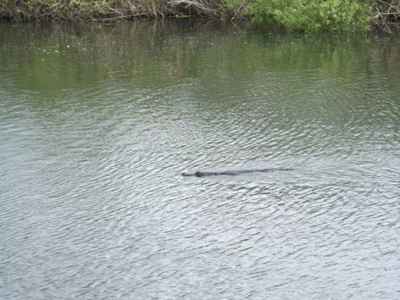 |
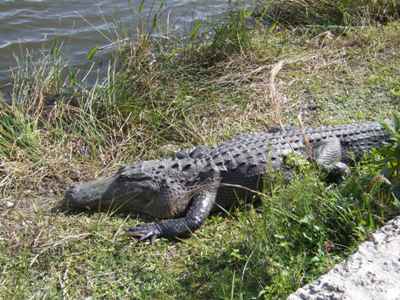 | There were
alligators just lying at the side of the road sunning themselves. Just as
well that they aren't too active at this time of the year. |
| They are obviously quite communal animals. There were eight in
this one tiny area. We were on a walkway some four feet above the ground
level. Fortunately they can't jump. | 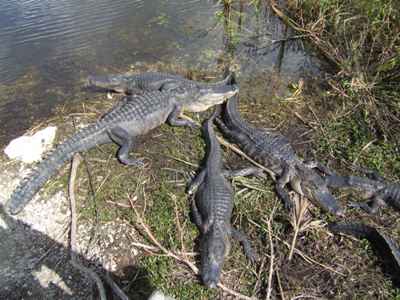 |
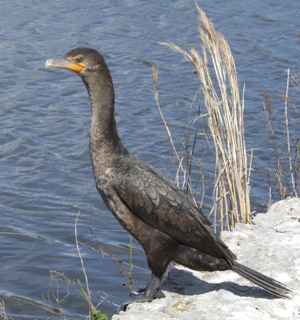 | Although the most
common birds around are anhingas, we are fairly sure that this is a
cormorant. Although this is fresh water, we are not very far from brackish
water so there is a mix of both sea and freshwater birds. |
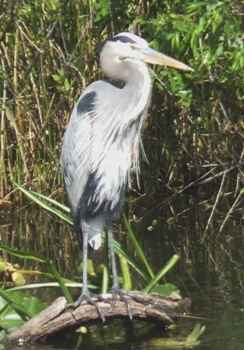 | What they are all
interested in is the fish. Everywhere we looked there were herons. These
are great blue herons although they are mainly grey in colour. | 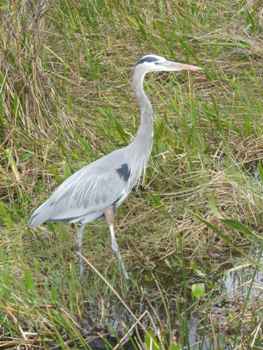 |
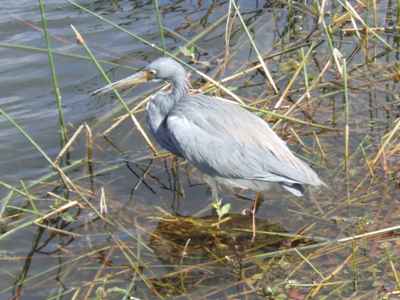 | Two more showing
the vicious looking beaks and just how huge they are when in flight. | 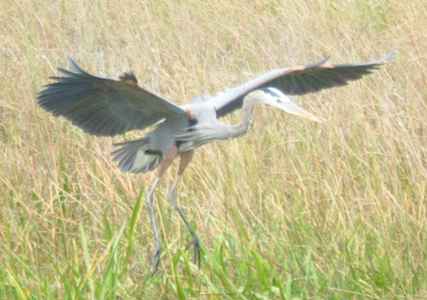 |
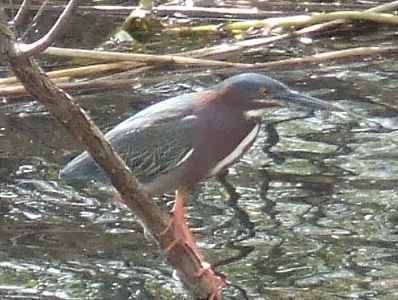 | This is also a
heron on the left, this time a night heron. The birds on the right are anhingas with a number of well developed
chicks. Both males and females sit on the nest and help feed the chicks. | 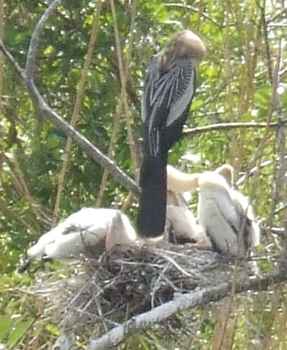 |
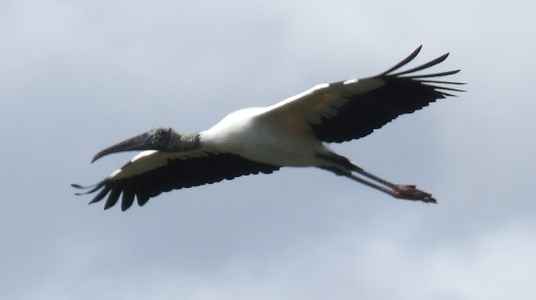 | These wood storks
are an endangered species due to their shrinking habitat. The Everglades are one of the few areas left
where they still nest. They too are magnificent in flight. | 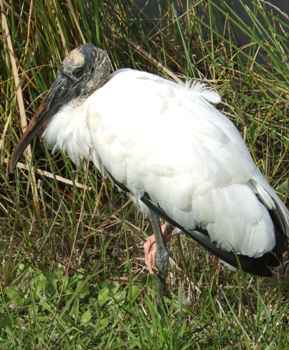 |
| We heard a rustling in the leaves and spotted this purple
gallinole eating the remains of a fish. It is unlikely that it caught it but
maybe a heron spiked it and then lost it. | 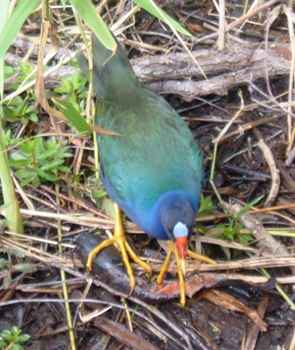 |
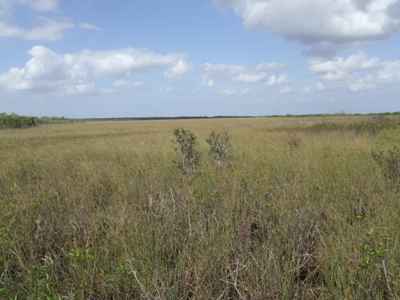 | Much of the
Everglades consists of this grassy meadow type grass. At ground level it is
likely to still be in water. This environment covers millions of acres in
southern Florida. |
| The Gumbo Limbo Trail takes you round a 'hammock' which is just
slightly higher than the surrounding ground. This enables trees to grow
rather than just grasses and shrubs. This is probably a fig tree. They are
quite common. Usually the original host tree is dead. | 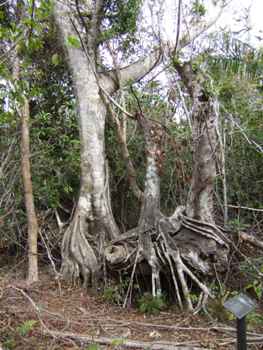 |
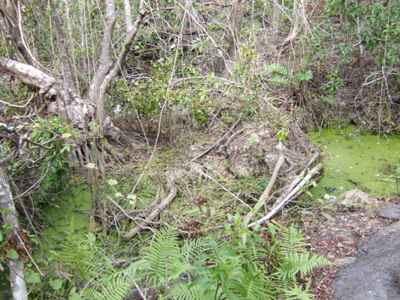 | The green is
algae on the water of this hollow. The hollows are often cleaned out by
alligators and then become very important in the dry season as water holes
which
support life as the ground around dries out. |
| Water is everywhere but as soon as the ground gets a little
higher you get a 'hammock' and the vegetation there is pretty impenetrable.
Hammocks are actually areas of very high bio-diversity. | 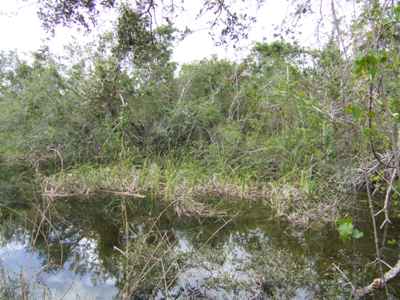 |
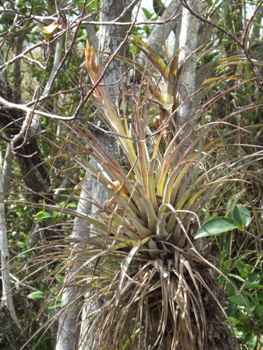 | Bromeliads and air
plants abound. This was not the right season but there would be a riot of
colour when these plants are in flower. |
| At the end of the boardwalk is a lake with several tiny islands.
These were full of birds nesting in comparative safety.. | 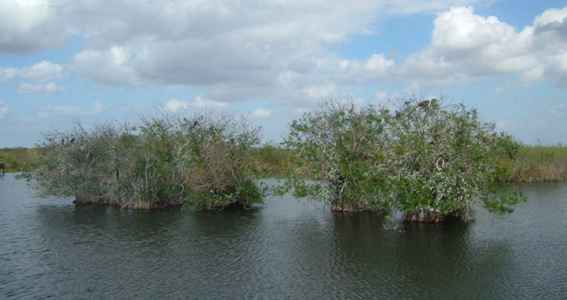 |
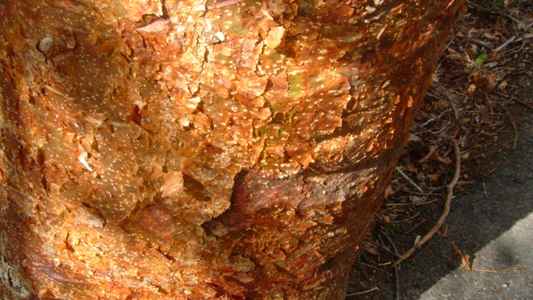 | The namesake of the
woodland trail, the gumbo limbo tree, also known as the sunburn tree
because of the red flaky skin on the bark. |
| An innocuous narrow waterway but don't miss the eye in the middle of
the picture. Measure the length from the eye to the snout in inches and you
get the overall length in feet. | 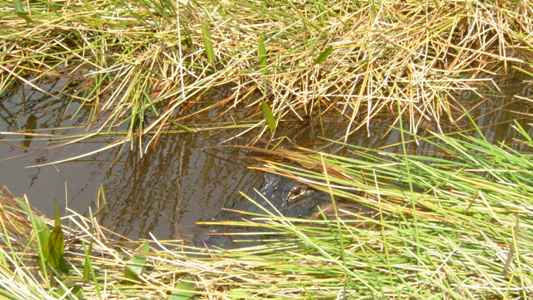 |
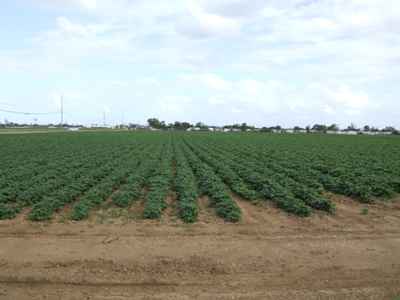 | Just outside the
park and agriculture becomes big business. It is people who use water for
agriculture and living. Over the years they have diverted water and that has
had huge impact on the Everglades, reducing the size of the habitat through
changes in available water. |
| But the fruit stand on the corner has all sorts of exotic fruits and
vegetables, including this sugar cane. | 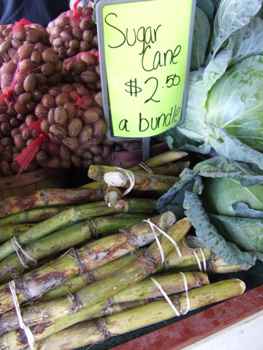 |
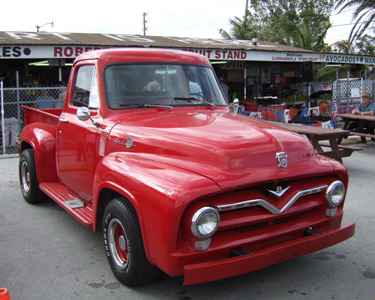 | There are several
old cars and a tractor outside. This one has been modified, others are
still in original condition. The Americans just love old vehicles. |
|